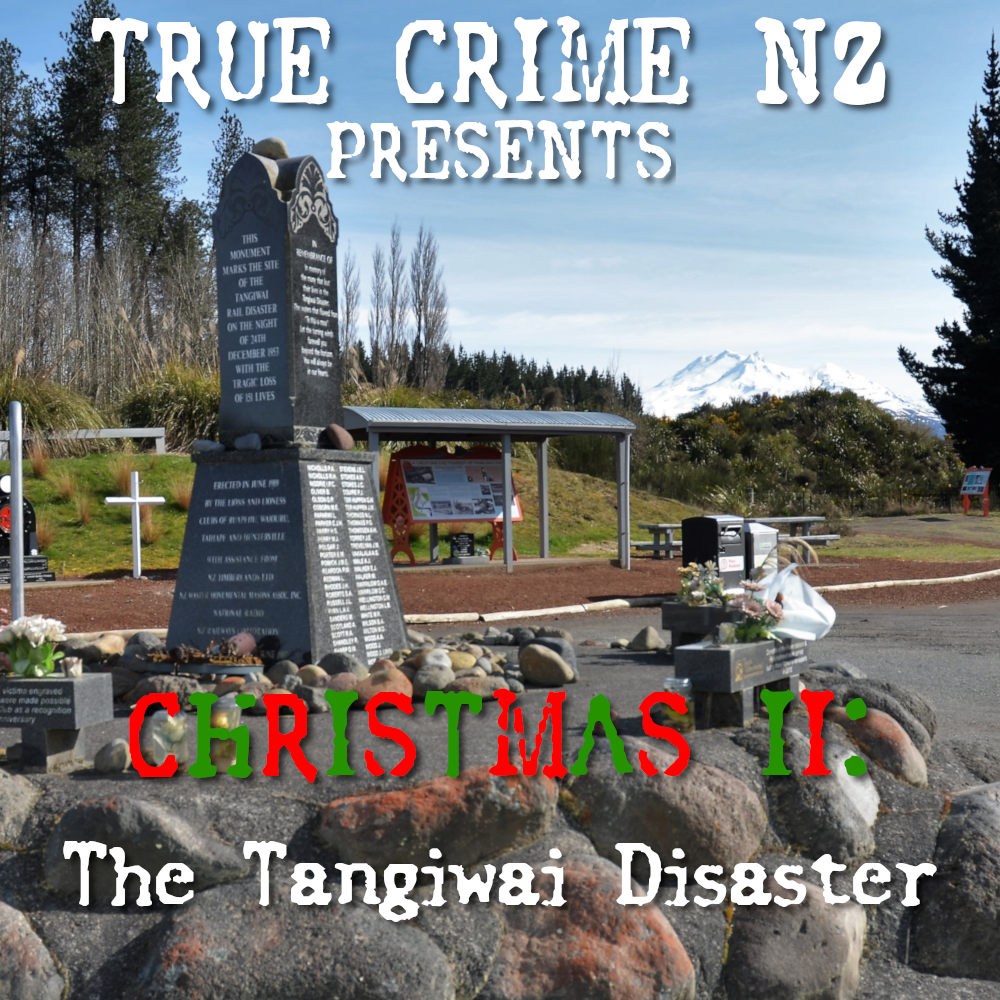

At 3 pm on Christmas Eve 1953, a Thursday, the daily Express train No. 626, a KA 949 class steam locomotive, left the Wellington railway station en route to Auckland carrying 285 souls, some men, some women, some children, many families visiting relatives, or even folk returning home for the holidays armed with presents for their loved ones.
As the evening progressed, the train passed through Levin, Palmerston North, Feilding and Taihape. Nearing 10 pm, train No. 626 passed through the small military town of Waiouru, perhaps passengers looked out and observed the famous Waiouru Military Camp, home to many of NZ’s armed forces at the time.
At 10.20 pm, train No. 626 passed the Tangiwai Railway Station, it was clocked at 64 kilometres per hour (or 40 miles per hour), below the maximum track speed of 80km/h (or 50mph). The train continued chugging along and began approaching the rail bridge that crosses the Whangaehu River.
Visit www.truecrimenz.com for more information on this case including sources and credits.
Hosted by Jessica Rust
Written and edited by Sirius Rust
Music sourced from:
Day of Chaos by Kevin MacLeod
Link: https://incompetech.filmmusic.io/song/3620-day-of-chaos
License: https://filmmusic.io/standard-license
Almost in F by Kevin MacLeod
Link: https://incompetech.filmmusic.io/song/3354-almost-in-f
License: https://filmmusic.io/standard-license
Sad Trio by Kevin MacLeod
Link: https://incompetech.filmmusic.io/song/4314-sad-trio
License: https://filmmusic.io/standard-license
Touching Moments One – Pulse by Kevin MacLeod
Link: https://incompetech.filmmusic.io/song/4537-touching-moments-one—pulse
License: https://filmmusic.io/standard-license
Sunset at Glengorm by Kevin MacLeod
Link: https://incompetech.filmmusic.io/song/4437-sunset-at-glengorm
License: https://filmmusic.io/standard-license
Bittersweet by Kevin MacLeod
Link: https://incompetech.filmmusic.io/song/3440-bittersweet
License: https://filmmusic.io/standard-license
Virtutes Instrumenti by Kevin MacLeod
Link: https://incompetech.filmmusic.io/song/4590-virtutes-instrumenti
License: https://filmmusic.io/standard-license
StompDance by Kevin MacLeod
Link: https://incompetech.filmmusic.io/song/4419-stompdance
License: https://filmmusic.io/standard-license
Urban Gauntlet by Kevin MacLeod
Link: https://incompetech.filmmusic.io/song/5012-urban-gauntlet
License: https://filmmusic.io/standard-license
Plaint by Kevin MacLeod
Link: https://incompetech.filmmusic.io/song/4224-plaint
License: https://filmmusic.io/standard-license
Pippin the Hunchback by Kevin MacLeod
Link: https://incompetech.filmmusic.io/song/4219-pippin-the-hunchback
License: https://filmmusic.io/standard-license
CHRISTMAS II: The Tangiwai Disaster
——
1953
1953 was a significant year for the history of New Zealand. The year started with a highlight, on the 6th of January Godfrey Bowen set the world record for sheep shearing — shearing 456 sheep in nine hours.
Then five months later on the 29th of May, New Zealander Edmund Hillary along with Nepali-Indian sherpa Tenzing Norgay became the first two people to scale the summit of Mount Everest, the highest point on earth at 8,848m high.
Then four days later, on the 2nd of June, young Queen Elizabeth II was crowned in a ceremony at Westminster Abbey. It was soon after this that the Queen also announced that she would be embarking on a seven month around the world trip visiting her commonwealth countries. The Queen announced she would be arriving in NZ from Australia on the 23rd of December — becoming the first reigning monarch to visit ‘The Land of the Long White Cloud’.
Queen Elizabeth and her husband Prince Philip arrived in Aotearoa on the 23rd of December 1953. The Queen stepped off the boat in Auckland with Prince Philip in tow to masses of cheering crowds. The Queen spent most of the day making appearances, first a trip up Queen Street in Auckland to wave to masses who had lined the streets, then she travelled to Auckland Hospital to recognize the sick, before ending the day in Devonport Harbour to pay tribute to the Navy men who had served the commonwealth during the two World Wars.
That day Queen Elizabeth made a speech from Auckland thanking NZ for their warm welcome:
“This is the first time that I have spoken to New Zealanders in their own homeland and my first words must be to tell you how happy I am to be amongst you. I am looking forward with hope and happiness to the journey I am to take with my husband, from this city to the southernmost part of the South Island. A journey during which I shall meet many of you in your own homes and see something of the beauty and greatness of your country.”
“I want to thank you, too, for your welcome to my husband. We have both been deeply moved this morning. It has indeed been an inspiring experience for us to travel across two vast oceans from one side of the world to the other and to find ourselves not in a foreign land and amongst alien people, but at home with our kinsmen.”
Sunset on the 23rd of December 1953 and NZ lay their heads down to get some ‘kip’, knowing tomorrow was going to be a hectic day — Christmas Eve.
EXPRESS TRAIN NO 626
At 3 pm on Christmas Eve 1953, a Thursday, the daily Express train No. 626, a KA 949 class steam locomotive, left the Wellington railway station en route to Auckland carrying 285 souls, some men, some women, some children, many families visiting relatives, or even folk returning home for the holidays armed with presents for their loved ones.
The train, weighing in total 467 tonnes, began its long 681km journey to Auckland, manned by engine-driver 52-year-old Charles Parker and fireman 33-year-old Lance Redman (a fireman is a person whose occupation it is to tend the fire powering the steam engine).
Express train No. 626, with eleven carriages in tow, began its immense overnight journey scheduled to take around nineteen hours. The passenger carriages were made up, in order from the train engine back, of five second-class cars (lettered A, B, C, D and E) then four first-class cars (lettered V, W, X and Z), one guard’s van and a postal van. The second-class cars were more economical because of their proximity to the engine, therefore they dealt with extra noise, as well as greater smoke and fumes from the locomotive.
As the afternoon turned into the evening, the train continued to chug along the North Island Main Trunk, some folk played cards to pass time, some chatted about their Christmas plans, others tried to get some shut-eye for the big day tomorrow.
As the evening progressed, the train passed through Levin, Palmerston North, Feilding and Taihape. Nearing 10 pm, train No. 626 passed through the small military town of Waiouru, perhaps passengers looked out and observed the famous Waiouru Military Camp, home to many of NZ’s armed forces at the time.
At 10.20 pm, train No. 626 passed the Tangiwai Railway Station, it was clocked at 64 kilometres per hour (or 40 miles per hour), below the maximum track speed of 80km/h (or 50mph). The train continued chugging along and began approaching the rail bridge that crosses the Whangaehu River.
RUAPEHU
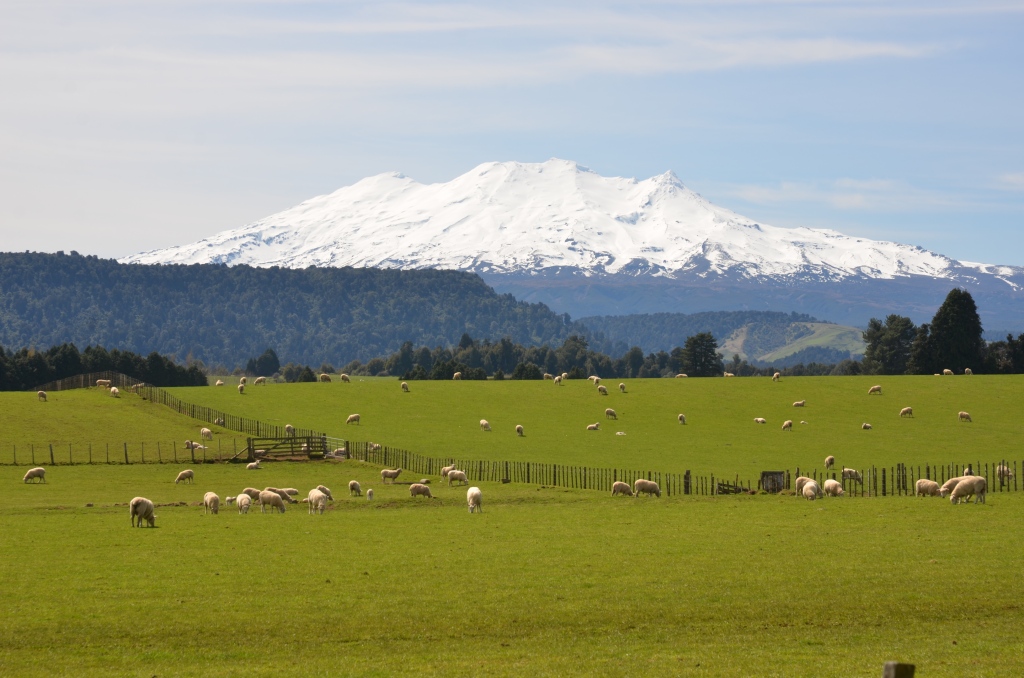
Over 250,000 years ago, according to Maori legend, Mount Ruapehu was a beautiful, female mountain and was wed to the male Mount Taranaki. One day, while Taranaki was out hunting — Ruapehu was seduced by the masculine Mount Tongariro. When Taranaki returned and discovered this infidelity, he attacked Tongariro and a massive battle unfolded.
Ultimately, Mount Taranaki was defeated and was forced to retreat. Taranaki retreated towards the west coast of the North Island, some legends say he carved out the Whanganui River as did so, before settling where you can still find him today — approximately 35km south of New Plymouth and 250km west of his estranged wife — Ruapehu.
It is said that to this day, Mount Taranaki still loves and misses his wife Mount Ruapehu. Legends say that the mist drifting eastward from the top of Mount Taranaki is a physical manifestation of his love for Ruapehu. While simultaneously, Mount Ruapehu regrets her actions and continues to weep for her lost love. Her cries can be heard in the form of eruptive activity.
Over the past 2,000 years, Mount Ruapehu has recorded more than 600 eruptions. Most of these have been minor in nature.
By the 20th century, Mount Ruapehu had laid dormant for the better part of a century. It was in March of 1945 that scientists began recording volcanic activity coming from the mountain. Over the next nine months, the mountain continued to have small eruptions, dispersing ash across the North Island of New Zealand causing eye and throat irritation to many of the citizens and even disrupting the water supply in some cities.
By the end of 1945, the eruptions had ceased but the eruptions had created a formation of volcanic rock and ash around the crater rim — this is known as a tephra dam. Geologists warned the authorities that the crater rim was “a reason for concern” but these warnings were largely ignored. Over the next few years, the crater slowly filled with water. The consequences for the 1945 eruptions would not be felt until eight years later in 1953.
As the sun rose on the 24th of December 1953, many of NZ’s citizens prepared for the festive activities the next day. What they didn’t know was that mother nature had other plans in waiting ready to corrupt the jovial mood.
Shortly after 8 pm, the waters found an outlet beneath the Whangaehu Glacier. Approx. two million cubic metres of lahar made up of water, ice, mud and rock surged down the slopes of Mount Ruapehu and into the Whangaehu River. The massive wave continued down the channel and toward the 60m railway bridge (No. 136) that crosses the river.
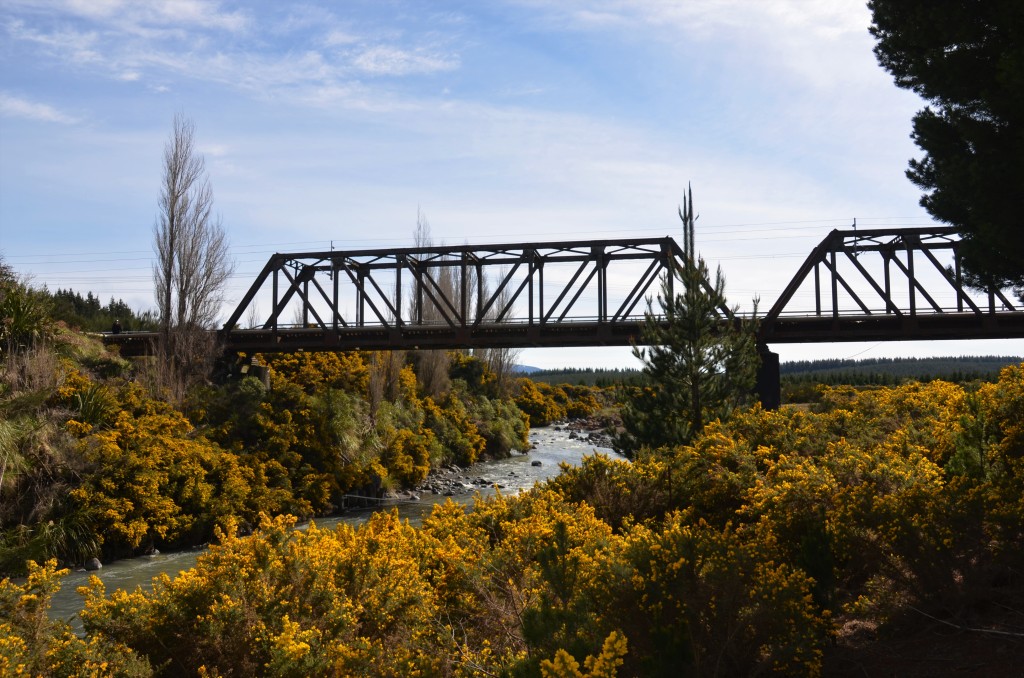
The six-metre-high wave hit railway bridge No. 136 at approximately 10.10 pm, completely removing pier 4 and 5 that was holding up the bridge, and severely damaging pier 2 and 3. The wave took much of the bridge with it as it continued its rampage down the Whangaehu River.
CYRIL ELLIS
On the night of the 24th of December 1953, 27-year-old Cyril Ellis, a postal worker from Taihape, was travelling to Rangitau to visit his parents for Christmas. Around 10.20 pm, Cyril came to a bridge but found he couldn’t cross. Cyril told Warren Barton for the Dominion Sunday Times newspaper for the article ‘The Christmas a nation mourned’ on the 25th of June 1989, “… I couldn’t get across. The floodwaters were so high I would have gone with it”.
Cyril looked around, his eyes caught the train tracks. His gaze followed the tracks and became wide-eyed when he saw the lights from Express Train No. 626 barrelling towards where the railway bridge No. 136 once stood, “Then I saw the train coming down toward the railway bridge. There was just nothing there. I had to try and stop it. I grabbed my torch — [I] always carried a five-cell torch — and jumped over the fence. I got on to the middle of the track and waved the torch till the train was right on top of me. How the hell I got off the track in time I’ll never know”.
Cyril pounced out of the way of the train as it continued, it would seem his actions caught the attention of the engine crew though. Charles Parker, the engine driver, and Lance Redman, the fireman, applied the train’s emergency brakes and shut off its fuel-oil supply tap. The train skidded for 200 metres and its speed began to abate, but the damaged bridge was still approaching quickly.
Train No. 626, carrying 285 souls, travelling at 40mph began crossing the bridge before nose-diving into the river. The locomotive and all five second-class carriages followed and plunged into the river. Cyril described what he observed to Owen Shaw of the NZ Herald on the 16th of December 1978 for the article ‘Tangiwai rail disaster’, “The train went straight on over the bridge. Halfway across the engine simply nosedived off the southern bank and seemed to go with a bellowing splash nearly against the opposite bank. The first carriage went with it. You never heard such a noise. The second carriage appeared to stand up on end and, with the weight of the carriages behind it was catapulted into the air. The three carriages following broke into three separate parts. They hit the water and I could see them floating down the river with their lights still on. After they had travelled about 40 yards they disappeared and I no longer saw their lights”.
One survivor of the disaster, Mr R. Kyle described to Owen Shaw of the NZ Herald for the same article the horrifying moment as the carriages filled with the thick silt asphyxiating many of the occupants, “I will never forget the screams of those who were trapped in the carriages in the water… The cries died gradually as the water rose in the cars.”
Remaining on the bridge were the four first-class carriages, Cars V, W, X and Z, as well as the guard’s van and the postal van. However, the first-class carriage, Car Z, was teetering at a 45-degree angle on the edge of the broken bridge.
Cyril dashed on into Car Z and along with the train’s guard, William Inglis, began imploring people to exit the carriage. However suddenly, Car Z uncoupled from the remaining carriages and fell into the torrent of water and silt too.
Cyril Ellis described the moment to Warren Barton for the Dominion Sunday Times newspaper for the article, ‘The Christmas a nation mourned’ on the 25th of June 1989, “[It was] real chaos. Five got carried in by the engine and the sixth car was dangling over the bridge. I got in, told them they had to get out and all of a sudden I went into the water with them. It would really break your heart…”
Car Z rolled down the river before coming to rest on its side in the water. The car became chaotic with panic as water rushed through the carriage. Cyril smashed out several windows, before helping as many of the frightened passengers as he could to freedom. He and one other passenger, John Holman, along with the train’s guard William Inglis teamed up and began pulling the terrified passengers out the window opening and onto the side of the carriage. One by one, the men valiantly pulled the frightened passengers to safety. Together, as the flooding river continued to pound around them, all but one of the 22 passengers in Car Z survived.
One of the rescuers, John Holman described to The Dominion Post for the article ‘He never forgot Tangiwai… It still gave him nightmares’ on the 2nd of May 2009 the torrid time of attempting to save all the passengers, “We only lost one person in the carriage and I shouldn’t have lost her. Her sister was screaming at me to find her. In the end, I had to punch her in the face to try to calm her down to get her out. But I couldn’t find her sister. She was stuck under a seat and she drowned. I shouldn’t have lost her”. That person was 26-year-old Suzanne Kennedy.
The survivors huddled on the carriage side as the flooding subsided. About an hour later, the water had receded enough that the survivors from Car Z made a human chain in waist-high water to the riverbank and made their way to safety.
Further downstream, past the road bridge, one of the second class carriages had become wedged on the riverbank. As the carriage lay on its side, passersby, Arthur Bell and his wife came across the macabre sight. Mrs Bell left to ‘raise the alarm’ and get help, while Arthur stayed with the carriage. He climbed on top of the carriage and assisted 15 people to safety.
RESCUES
The long night continued. Eventually, soldiers arrived from the nearby Waiouru Camp to look for and rescue any remaining survivors. Some fortunate survivors were found downriver, clinging to the bank covered in oil and silt, having somehow made their way to safety from the treacherous waters. The survivors were transferred to Waiouru Military Camp Hospital.
As the night continued, members of the NZ Forest Service, Ministry of Works, Police, navy personnel, groups of farmers and other local volunteers joined the soldiers as they looked for more survivors from the crash.
Dr Fraser McDonald, who was the medical officer at Waiouru Military Camp, was one of the first rescuers on the scene. He described the horrifying sight to Warren Barton of the Dominion Sunday Times for the article ‘The Christmas a nation mourned’ on the 25th June 1989, “None of us knew at the time whether this was the beginning of a terrible eruption or an earthquake. None of us knew what might happen in the next few minutes. Yet there was no sign of panic. It was frightening. In the carriages there was this terrible roar, this terrible smell of sulphur, this terrible noise from the river. It was a strange and eerie experience, seeing the dead thrown around like dolls inside these carriages, which were themselves thrown around like children’s toys. It was as if our ordinary, believable, rational, explainable, predictable world had suddenly been torn apart and all unreasonableness had been let loose. As if chaos was upon us. And yet, here were ordinary New Zealanders, to say nothing of the army, just determined to work, to help, thinking nothing of their own safety”.
As the sun rose on Christmas Day 1953, the hope of uncovering any remaining survivors was becoming lost and the operation then became about recovering bodies. In the following days, farmers downriver were asked to keep an eye out for bodies. Searchers continued looking, few survivors were found, but as a tragic reminder of the gravity of the catastrophe, many mud-soaked Christmas presents were recovered.
Ultimately, of the 285 souls on board Express train No. 626 that fateful night, 151 of them lost their lives — including Charles Parker, the engine driver, and Lance Redman, the fireman, as well as 148 second-class passengers, and one first-class passenger, meaning only 28 of the 176 second-class passengers survived. Even more tragic, of the dead, 20 corpses were never recovered and it was concluded that they must’ve been washed out to sea.
AFTERMATH
The sun rose on Christmas Day 1953 for the rest of New Zealand. Usually a day of joy, festivities and family. That was until the tragedy at Tangiwai spread across the country.
With no newspapers published on Christmas Day, many of the relatives of the victims would have found out from the radio that their friends or family members were never arriving via Prime Minister Sidney Holland’s Christmas Day announcement broadcast at Waiouru Military Camp at 1.30 pm. A transcript of this message reads in part:
“It is with profound regret that I have to announce that a most serious railway accident has occurred to the 3 p.m. express travelling from Wellington to Auckland. The disaster occurred at 10.21 p.m. last night, three-quarters of a mile north of Tangiwai – T A N G I W A I – which is 7 miles north of Waiouru. The train, which was on time at Waiouru, and also at Tangiwai, reached the railway bridge crossing, the Whangaehu River – W H A N G A E H U – Whangaehu River, sometimes called the Sulphur Stream.”
“It is with the deepest regret that I have to make this statement on Christmas Day, but I feel no doubt that it was my simple duty to do so.”
The Tangiwai Disaster was also referenced in the Queen’s annual Christmas Day broadcast. A transcript of which reads in part:
“Last Christmas I spoke to you from England; this year I am doing so from New Zealand. Auckland, which I reached only two days ago, is, I suppose, as far as any city in the world from London, and I have travelled some thousands of miles through many changing scenes and climates on my voyage here.”
“And now I want to say something to my people in New Zealand. Last night a most grievous railway accident took place at Tangiwai which will have brought tragedy into many homes and sorrow into all upon this Christmas day.”
“I know there is no one in New Zealand, and indeed throughout the Commonwealth, who will not join with my husband and me in sending to those who mourn a message of sympathy in their loss. I pray that they and all who have been injured may be comforted and strengthened.”
On the 31st of December 1953, Prince Philip attended the state funeral for the 21 unidentified bodies recovered at Tangiwai. They were buried at Karori Cemetery in an 18-metre long mass grave. Many of these bodies were then exhumed months later when it became clear some had been misidentified. Ultimately, sixteen bodies still lie at Karori Cemetery in what became the Tangiwai National Memorial, eight of which were never identified.
LEGACY
The 25th of December 1953 has gone down in history as NZ’s darkest Christmas day, a day of so much misery and grieving. The country at the time had a population of just over two million, so many in our small community knew someone who passed away in the Tangiwai Disaster.
Arthur Cyril Ellis and John Warren Holman, who helped many of the survivors to safety, both received the George Medal for bravery. Arthur Dewar Bell and William Ian Inglis received the British Empire Medal for their role in aiding in the rescue of many of the passengers. They all were awarded these medals in person by Queen Elizabeth on the 29th of January 1954.
A public inquiry was carried out to determine the cause of the accident. The report was released on the 23rd of April 1954 and found, “At this stage of the report it is appropriate to record that in respect of every member of the train crew of train No. 626 and of every member of the Way and Works and Traffic Branches whose duties can be regarded as being involved in the accident there has been no failure to exercise reasonable care or fulfil any duty or responsibility reasonably to be expected of that member in the circumstances leading to the accident.”
Additionally, to help prevent a disaster like this in the future, the NZ Railways Department installed a lahar warning system upstream of the Whangaehu River, this was to warn oncoming trains to high river flows.
The Tangiwai railway bridge was eventually rebuilt and reopened in 1957, to add further to the tragedy of the location, a worker was killed in this process of rebuilding the bridge.
AN ONGOING TRAGEDY
The Tangiwai Rail Disaster had a profound impact on the greater NZ, but the impact was especially apparent for those that were there that day. One of the heroes of Tangiwai, Cyril Ellis, who moved to Whanganui two years after the incident, reportedly never got over the tragedy. A friend of Cyril told The Dominion Post in 2009 that “He never forgot Tangiwai. How could anyone? It still gave him nightmares”.
Cyril told The Evening Post on the 26th of July 1989 that he thinks about Suzanne Kennedy, the woman who was trapped under furniture and he couldn’t save that night, “I shouldn’t have lost her. I could see her but she was under all the chairs. They’d all toppled forward and broke off… We pulled her out all right but she was gone — bloody shame”.
It would seem that some of the official inquiry conflicted with Cyril’s memory of that night. It was these differences he believes made the public attitude turn on him, “They ostracised me. They said I didn’t even get me feet wet… It was all petty jealousy and I’m not worried by it. Armchair critics are the worst bastards God ever put breath in.”
Cyril Ellis even sold his George Medal to a friend for $4,500 claiming that it had brought him nothing but misery. Cyril passed away in Whanganui at 69-years-old on the 29th of December 1995.
MEMORIAL
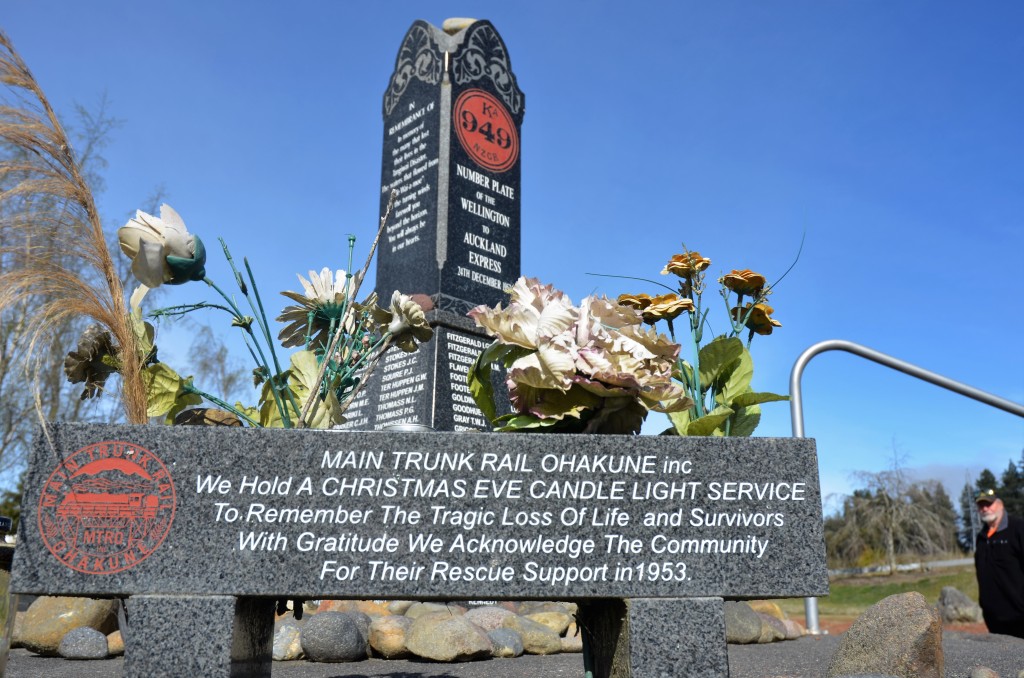
On the 18th of June 1989, a memorial was erected at the site of the tragedy to remember the lives lost at Tangiwai on the 24th of December 1953. The memorial face has the train’s KA 949 number plate and reads, “This monument marks the site of the Tangiwai Rail Disaster on the night of 24th of December 1953 with the tragic loss of 151 lives… In memory of the many that lost their lives in the Tangiwai Disaster. The waters that flowed from ‘Te Wai-a-moe’. Let the turning winds farwell you beyond the horizon. You will always be in our hearts”.
Another memorial was erected on the 7th of May 2017 to mark the courage of train driver and fireman Charles Parker and Lance Redman, the memorial reads, “This memorial recognises the heroism of Engine driver Charles Parker and Fireman Lancelot Redman whose actions enabled 134 persons onboard train number 626, the 3 pm Wellington – Auckland Express, to survive the Tangiwai disaster on 24 December 1953. They died upholding the finest traditions of their profession. Enginemen of New Zealand, who helped produce this mural will never forget those of their calling who made the ultimate sacrifice. Approaching the Whangaehu river bridge, the Enginemen, upon becoming aware of an unusual and potentially threatening situation, took immediate and appropriate action to stop the Express. They responded to the situation using their combined skills and instincts, doing all within their power in an attempt to save their train and the lives with which they had been entrusted. The raging torrent caused by the devastating lahar pouring down from Mount Ruapehu and already weakened the bridge. The impact of the 145-ton locomotive entering on the severely damaged bridge structure caused it to give way, resulting in the locomotive and the first five carriages plunging into the river, to be followed shortly thereafter by the sixth carriage. The vigilance and prompt actions of the Enginemen undoubtedly prevented the remainder of the train from entering the river. 151 souls, including Charles Parker and Lance Redman, were never to see the dawn of Christmas Day, as they perished in those turbulent waters that night.”
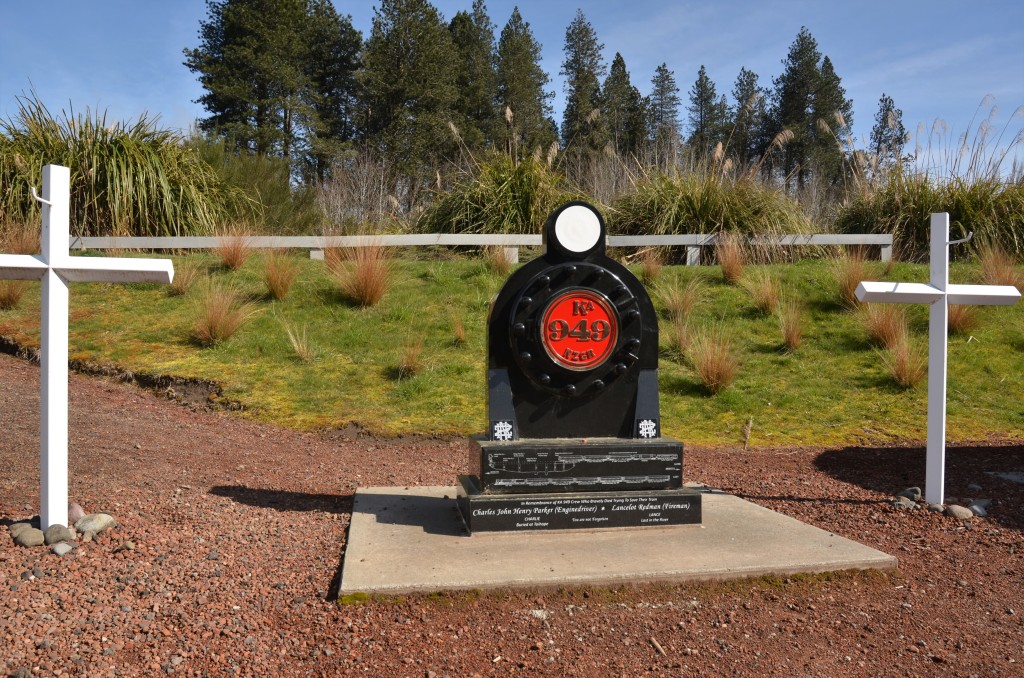
A tradition was created in subsequent years. On each Christmas Eve the express train slows and comes to a stop as it crosses the Whangaehu River, the driver exits the train and throws a bouquet of flowers into the water that took so many lives on the 24th of December 1953. The flowers are accompanied by a card that reads, “In memory of all who died at Tangiwai on Christmas Eve, 1953”.
DEDICATION
In Maori, Tangiwai means ‘Weeping Waters’, none more fitting for the site of NZ’s largest rail disaster.
——
This podcast is dedicated to the lives lost at Tangiwai that Christmas Eve in 1953
SOURCES
Internet Articles
Ministry for Culture & Heritage, Tangiwai Memorial, https://mch.govt.nz/nz-identity-heritage/national-monuments-war-graves/tangiwai-memorial
Sooty, DEATHS FROM THE TANGIWAI RAIL DISASTER, https://www.sooty.nz/tangiwai.html
The Dominion Post, ‘He never forgot Tangiwai… It still gave him nightmares’, https://www.pressreader.com/new-zealand/the-dominion-post/20090502/282059092946503
NZ History, Queen’s speech in Auckland, 1953, https://nzhistory.govt.nz/media/sound/queens-speech-in-auckland
The Royal Family, Christmas Broadcast 1953, https://www.royal.uk/christmas-broadcast-1953
NZ History, Sound: Prime Minister Sidney Holland at the Tangiwai disaster, https://nzhistory.govt.nz/media/sound/sound-clip-prime-minister-sidney-holland
The London Gazette, Tuesday, 26th January 1954, https://www.thegazette.co.uk/London/issue/40084/supplement/623/data.pdf
Wikipedia, North Island Main Trunk, https://en.wikipedia.org/wiki/North_Island_Main_Trunk
NZ History, The North Island main trunk line, https://nzhistory.govt.nz/culture/main-trunk-line/north-island-main-trunk-line
Te Ara, RUAPEHU, MOUNT, https://teara.govt.nz/en/1966/ruapehu-mount/page-3
Wikipedia, Mount Ruapehu, https://en.wikipedia.org/wiki/Mount_Ruapehu
Te Ara, Story: Historic volcanic activity, https://teara.govt.nz/en/historic-volcanic-activity/page-5
NZ History, Tangiwai Disaster, https://nzhistory.govt.nz/culture/the-tangiwai-railway-disaster
NZ Herald, In memory of our darkest night, https://www.nzherald.co.nz/nz/in-memory-of-our-darkest-night/4QKPWSDFN3HXOB7X74XP2YRTHA/
Christchurch City Libraries, Tangiwai railway disaster, https://my.christchurchcitylibraries.com/tanigwai/
Wikipedia, Tangiwai disaster, https://en.wikipedia.org/wiki/Tangiwai_disaster
Transport Accident Investigation Commission, TANGIWAI RAILWAY DISASTER REPORT BOARD OF INQUIRY, https://web.archive.org/web/20030319103107/http://www.taic.org.nz/rail/tangiwai_rail_disaster.pdf
Newspapers
The Dominion Post, A disaster never buried, 27th December 2014, pg A21
The Evening Post, One night’s legacy of bitterness, 26th July 1989, pg 29
Dominion Sunday Times, The Christmas a nation mourned, 25th June 1989, pg 15
NZ Herald, Hero of Tangiwai never forgot, 30th December 1995, section 1, pg 2
NZ Herald, Tangiwai rail disaster, 16th December 1978, section 2, pg 1